
Kristina Chan
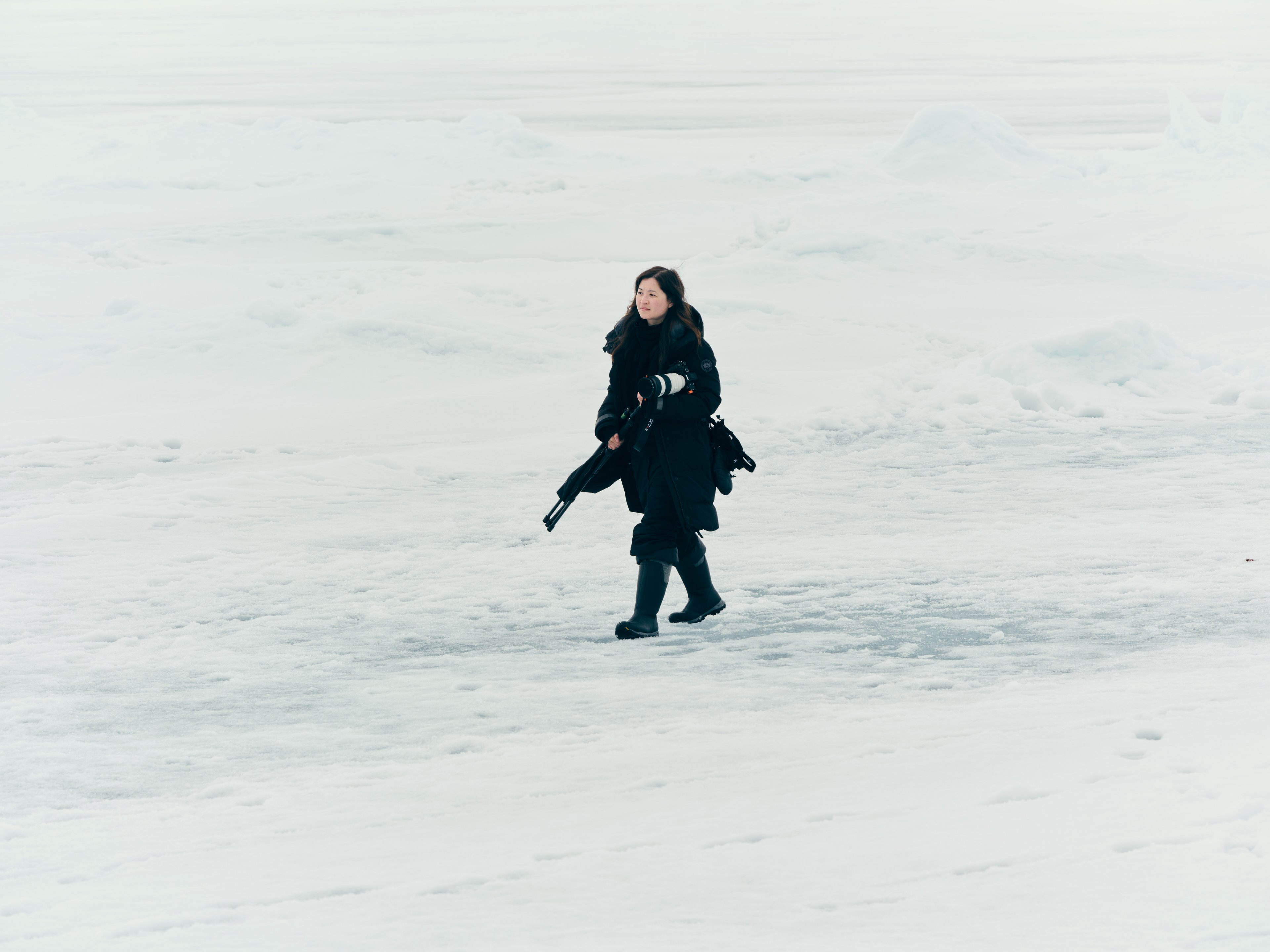
The artist on her expedition to the Svalbard Channel
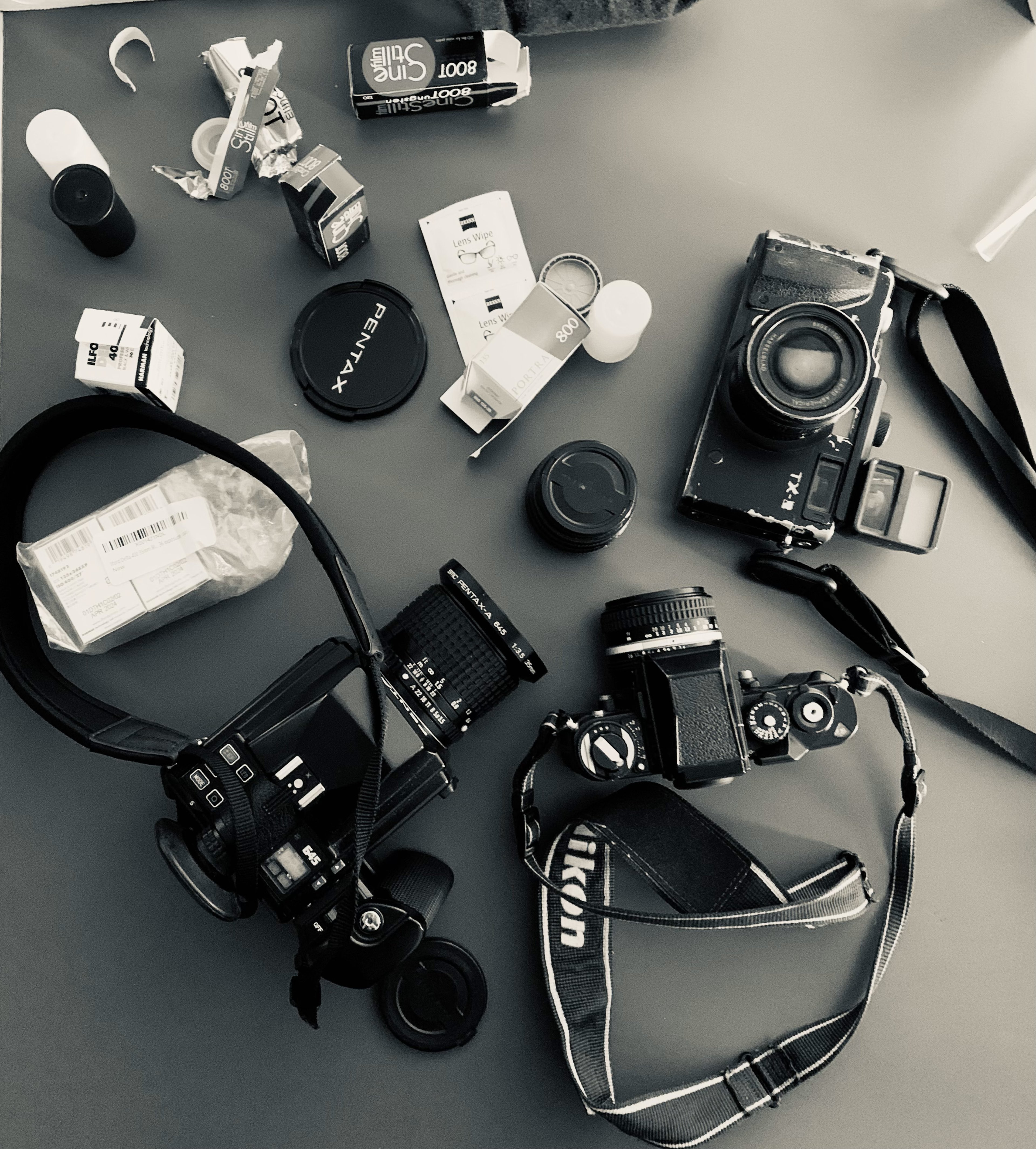
Kristina's cameras

Kristina in the printmaking studio

Kristina in the studio

The Antigua sailing in the Svalbard Channel, 2024

Mountainous Arctic Landscape
Taken by the artist during her voyage to the Arctic in 2024
Kristina Chan is an artist-photographer and printmaker who lives in London. Her practice utilises narrative and site specificity to evoke a felt history and sense of place. Inspired by post-impressionism, Japanese prints, and contemporary photography, her work explores the boundaries between individual and collective memory, and how these colliding narratives can affect our interpretation of space.
Kristina’s works are a culmination and accumulation into site specific history to depict socio-cultural entropic narratives. They explore the correlation between architecture and sculptural landscapes of derelict and disused spaces.
Canadian born, Kristina has exhibited globally, most notably at the Musée du Louvre during the 5th Annual Exposure Award Black and White Collection. Her work is held in the permanent collections of the Victoria & Albert Museum, Ingram Collection of British and Modern Art, the Royal Collection Clarence House, and the Royal College of Art.

Overboard the Antigua

The Arctic Landscape

Behind the Scenes: Habitable Climes "Zona Temperata, clima iv"

Arctic Landscape

Nevada Desert

Sailing aboard the Antigua
Kristina Chan journeyed to some of the planet’s least-known areas to gather inspiration and material for the body of work that came to be "Habitable Climes".
This space showcases a curated selection of video footage and photographs taken from her voyages of discovery: to Norway’s Svalbard archipelago, inside of the Arctic Circle aboard The Antigua (the frigid zone); exploring a Jurassic lakebed in the Nevada Desert (the torrid zone); and in the tropics of Australia (the temperate zones).

Polar Day
Pigment print on Japanese Kozo White 110gsm, 180 x 320 cm

Polar Opposite
Pigment print on Japanese Kozo Natural 110gms, 180 x 320 cm
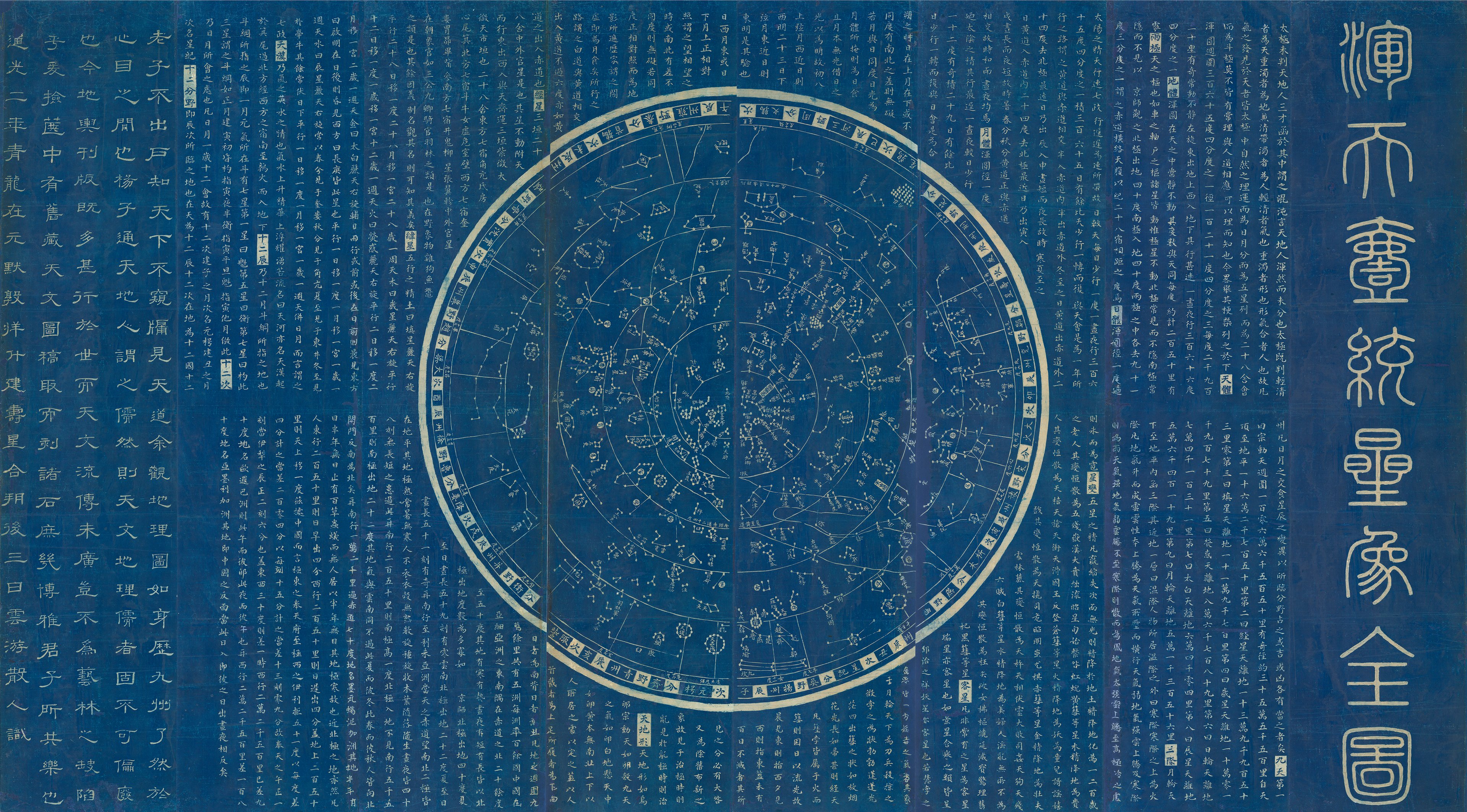
"Blue China" Celestial Map

"Blue China" Terrestrial Map
Drawing inspiration from the nineteenth century terrestrial and celestial maps from The Sunderland Collection known as the "Blue China Maps", Kristina explores the concept of night and day, creating works that reinterpreted both historical works through her own personal experience in these climes.
"Polar Day" charts the midnight sun across the sky in the Arctic Circle, and "Polar Opposite" is taken from a desiccated lake bed in Nevada through multiple dust storms.

ZONA FRIGIDA, clima i
Pigment print with screen print on Japanese Kozo Natural 110gsm, 90 x 110 cm

ZONA TEMPERATA, clima ii
Pigment print with screen print on Japanese Kozo Natural 110gsm, 90 x 110 cm

ZONA TORRIDA, clima iii
Pigment print with screen print on Japanese Kozo Natural 110gsm, 90 x 110 cm

ZONA TEMPERATA, clima iv
Pigment print with screen print on Japanese Kozo Natural 110gsm, 90 x 110 cm

ZONA FRIGIDA, clima v
Pigment print with screen print on Japanese Kozo Natural 110gsm, 90 x 110 cm

Habitable Climes: Emblems
The namesake of the exhibition, this series titled "Habitable Climes" draws from theories first described by Aristotle in which the Earth was thought to have five climes: the Arctic and Antarctic, or North and South frigid zones; the North and South temperate zones; and one very hot zone between the two tropical zones. Only the temperate zones were thought to be habitable. Referred to by Claudius Ptolemy as a zone on a map, 'climes' persisted for hundreds of years in European cartography.
The inspiration for this work was the 'Map of the Ancient Known World', deriving from Abraham Ortelius’s landmark atlas, "Theatrum Orbis Terrarum". A 1603 example of the atlas is held within The Sunderland Collection.
Each of the five works features an emblem based on the projections of maps from the Collection that first inspired Kristina. Read more about each of these maps here.

Impossible Measures
Series of 16 Etchings, 25 x 25 cm each

Kristina handling exploration artefacts in the Royal Geographical Society Archive with Dr. Katherine Parker, Cartographic Collections Manager

Behind the scenes at the Royal Geographical Society
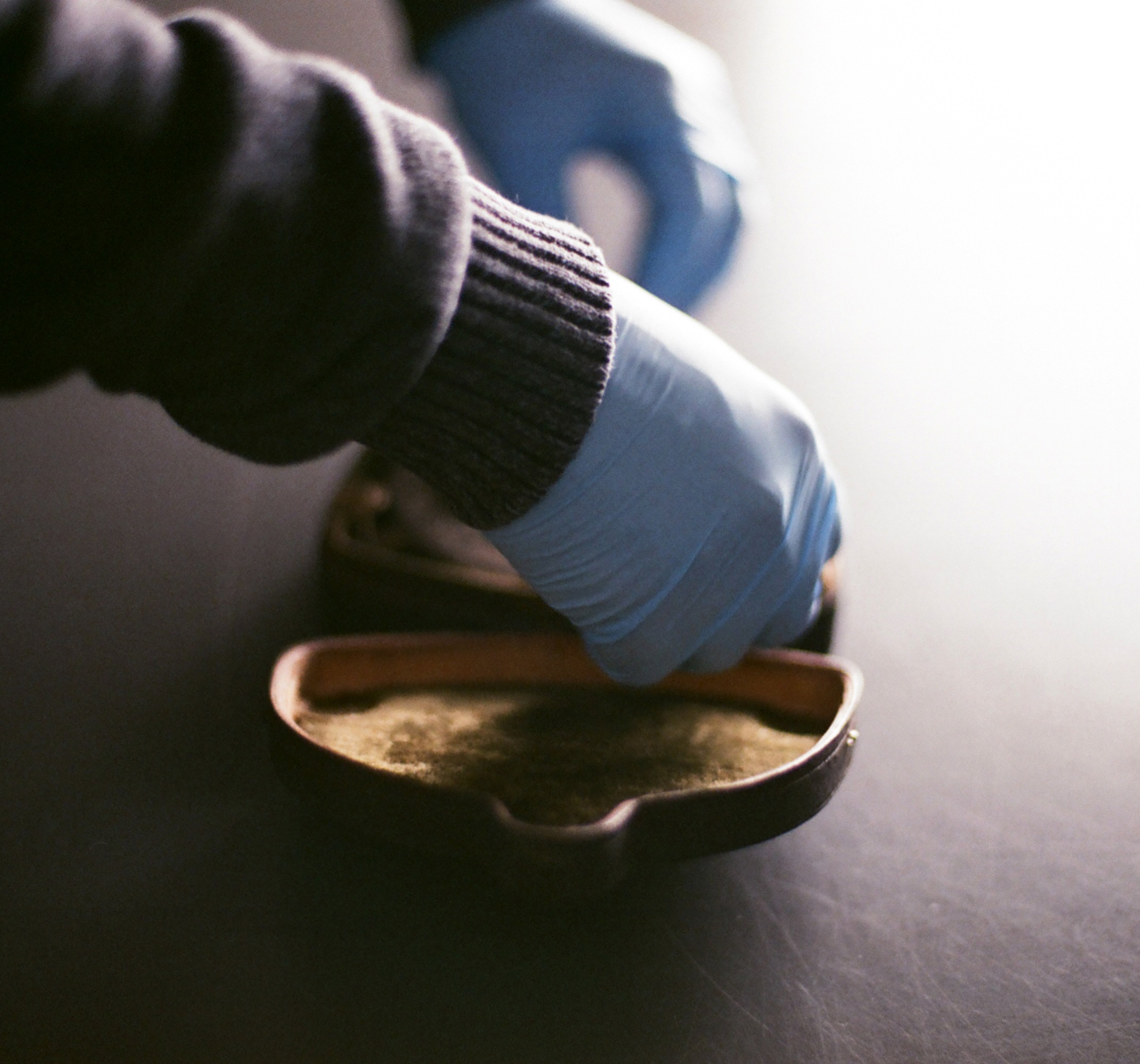
Kristina handling artefacts at the Royal Geographical Society

60 Degrees
Etching, 50 x 50 cm

Collaboration with The Royal Geographical Society
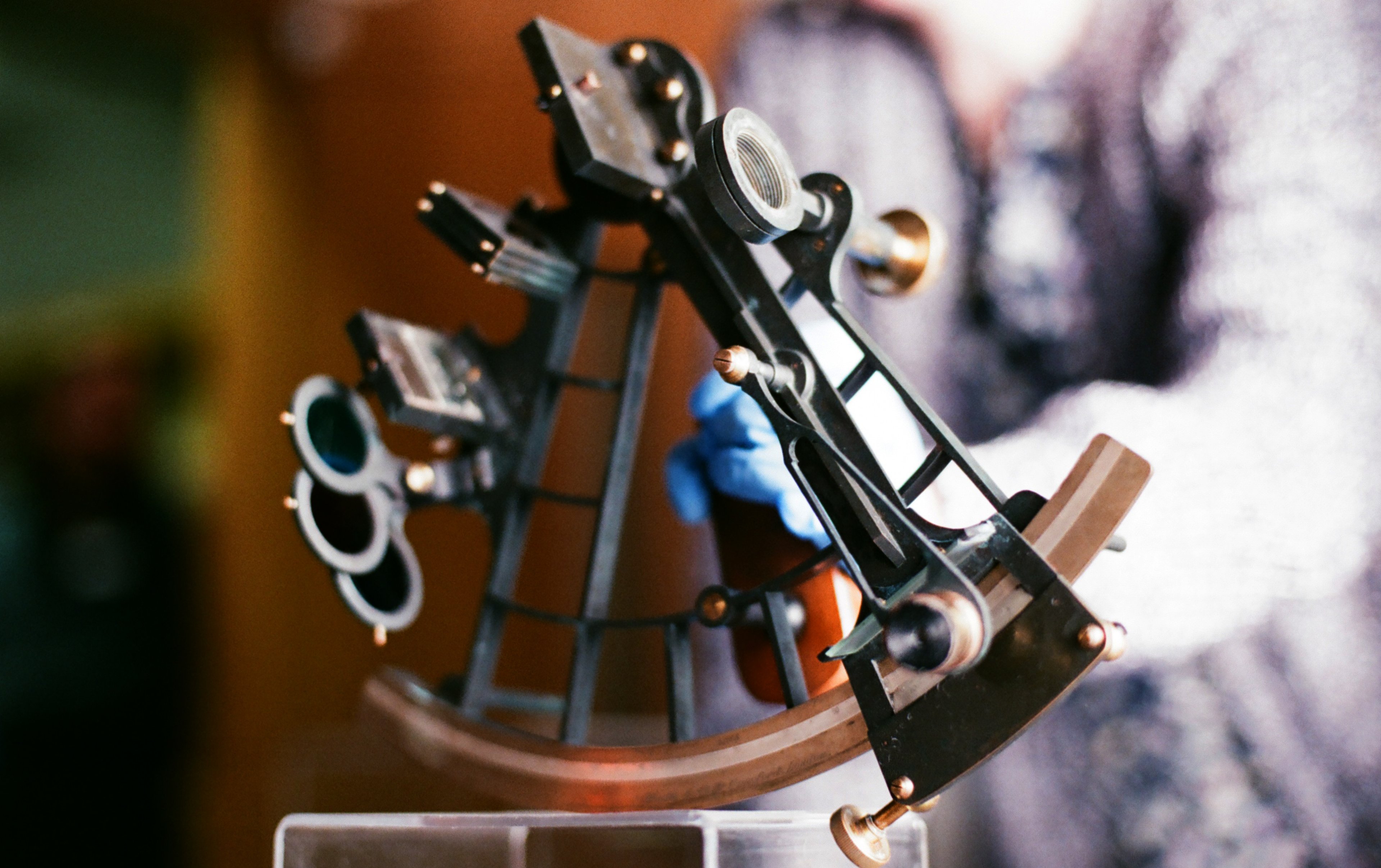
A Sextant, behind the scenes at the Royal Geographical Society
This series titled "Impossible Measures" comprises of two works; "60 Degrees" a mirrored and abstract re-working of an instrument, and the namesake of the series "Impossible Measures" is a series of sixteen etchings, looks at the obfuscation of direction through the photographing of navigational silhouettes. This obfuscation is from time, as knowledge is gained and lost repeatedly.
Inspired by the Royal Geographical Society’s extensive collection of exploration paraphernalia and instruments, these etchings feature artefacts such as Livingstone and Darwin’s pocket sextants, and Gertrude Bell’s theodolite. These remarkable objects delineated the world.
This series of works also takes inspiration from Robert Dudley’s 1647 masterpiece “Dell’Arcano del Mare” [The Secrets of the Sea] from The Sunderland Collection.
This magnificent and very scarce sea atlas was revolutionary in its time: it was the first sea atlas of the world; the first to use Gerard Mercator’s projection; the earliest to show magnetic deviation; the first to show currents and prevailing winds; and the first to expound the advantages of ‘Great Circle Sailing’ (i.e. the shortest distance between two points on a globe).

View Finding: Stereoscope
Etching, Mixed Media, 9 x 20 cm

View Finding: Stereoscope
Etching, Mixed media, 9 x 20 cm

View Finding: Stereoscope
Etching, Mixed media, 9 x 20 cm

View Finding: Stereoscope
Etching, Mixed media, 9 x 20 cm

View Finding: Stereoscope
Etching, Mixed media, 9 x 20 cm

View Finding: Stereoscope
Etching, Mixed media, 9 x 20 cm

View Finding: Stereoscope
Etching, Mixed media, 9 x 20 cm

View Finding: Stereoscope
Etching, Mixed media, 9 x 20 cm

View Finding: Stereoscope
Etching, Mixed Media, 9 x 20 cm

View Finding: Stereoscope
Etching, Mixed media, 9 x 20 cm

The Stereoscope
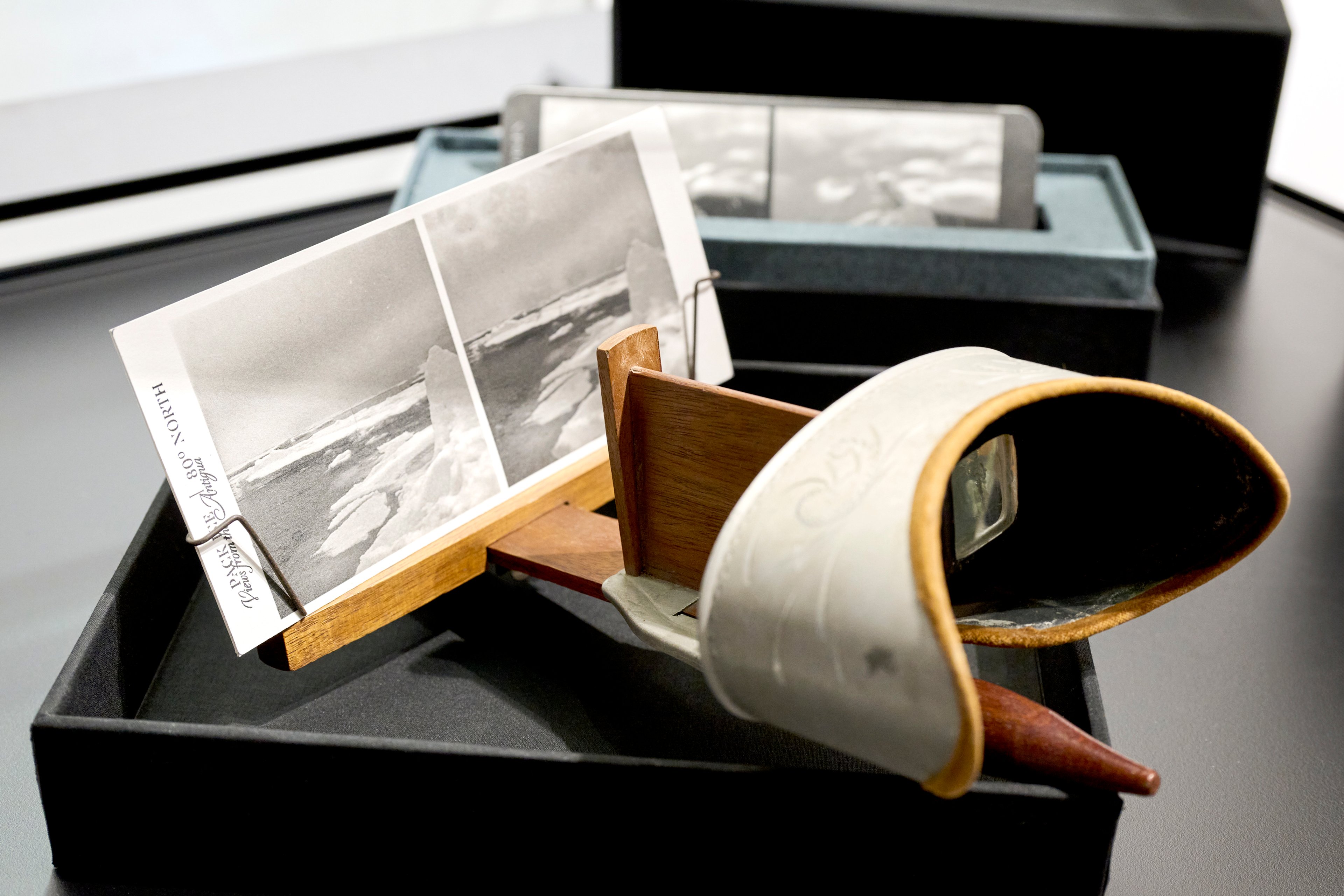
Antique stereoscopic viewfinder
This series of Graphoscope artworks reflect on the history of viewfinding in both photographic process and its democratisation. The stereoscopic slides transition into a grid of grapho-scopic slides and 'carte des visites'.
They show the accessibility of photography and the evolution of the process. The series contains a series of etchings, as well as analogue photos and digital images printed by hand or onto metallic silver paper and backed onto card depicting over 100 years of photographic process.
The subject of the images focus on the 5 climes, and echo the historic format in which they would have been circulated and consumed within the wider world.

View Finding: Graphoscopes
Etching, Mixed media, 10 x 18 cm

View Finding: Graphoscopes
Etching, Mixed media, 10 x 18 cm each

Graphoscope
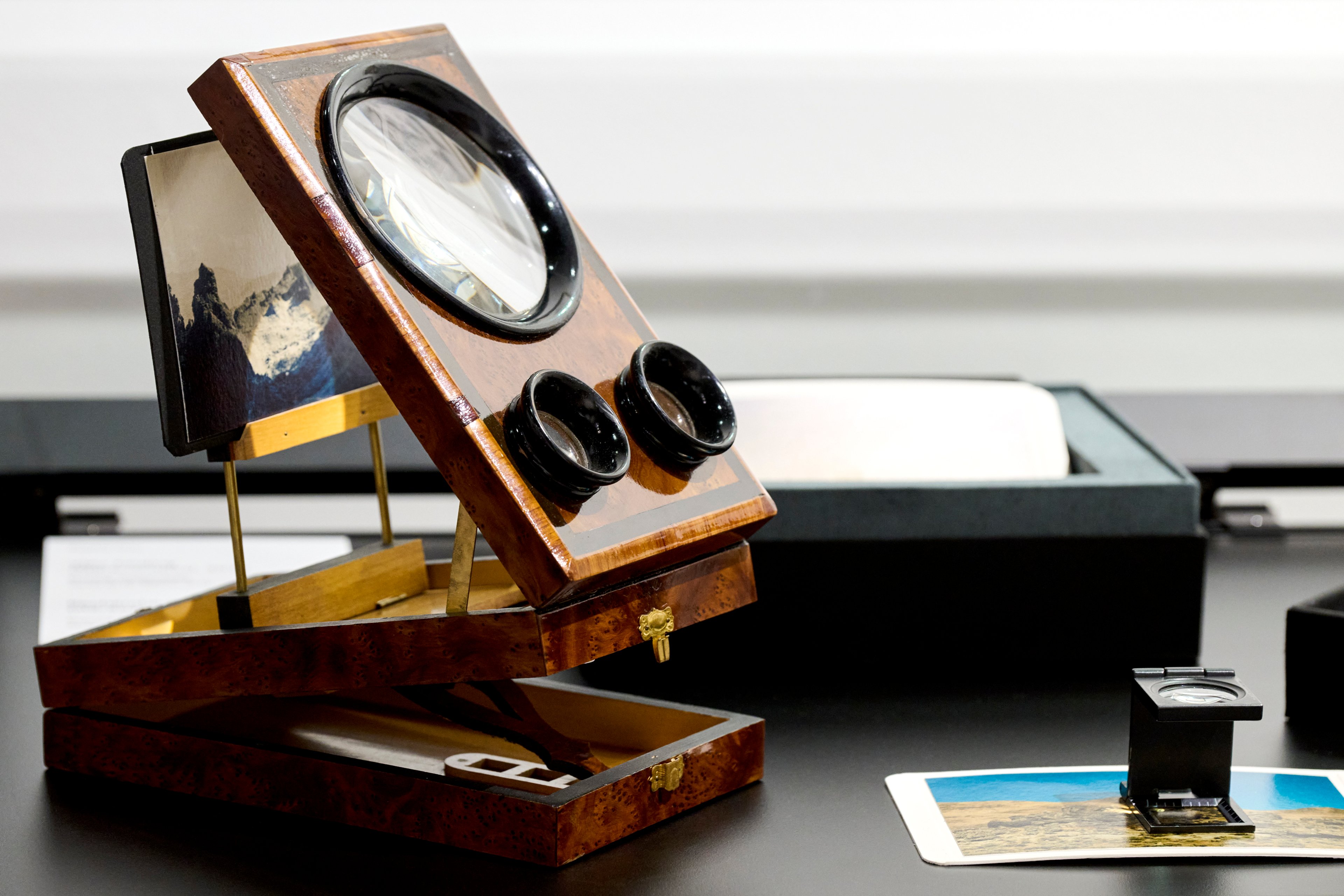
Antique Graphoscope Viewfinder

View Finding: Graphoscopes
Etching, Mixed Media, 10 x 18 cm each

Kristina viewing magic lantern slides in the Royal Geographical Society archives

View Finding: Graphoscopes
Etching, Mixed Media, 10 x 18 cm each
Alongside the stereoscopes, these graphoscope works reflect on the history of viewfinding in both photographic process and its democratisation. The slides transition into a grid of grapho-scopic slides and 'carte des visites'.
They show the democratisation of photography and the evolution of the photographic process. Etchings, analogue photos and digital images printed by hand or onto metallic silver paper have been backed onto card depicting over 100 years of photographic technique.
The subject of the images focus on the give climes. They depict the format in which images of remote places would have travelled back with their creators, and been circulated within the wider world.

Glaciers are not made of ice

Kristina Chan in the studio

Axis Points
Pigment Print on Hahnemühle Metallic, 25 x 25 cm

Kristina using the printing press in her studio

In the Studio

Kristina in the studio lining up a printing plate
Master printer Kristina has created two special limited edition prints tor Habitable Climes; a fine pigment print on Hahnemühle Metallic titled "Axis Points" and an ethereal etching with chine collé titled "Glaciers are not made of ice".
Each work has an edition of 20, is signed by the artist, and comes with a Certificate of Authenticity. Both are available to purchase from the Oculi Mundi online shop.
Overview
Kristina Chan: Habitable Climes
The Sunderland Collection is delighted to announce the second edition of its acclaimed Art Programme, culminating in the creation of new works by artist-photographer and printmaker Kristina Chan, who was inspired by maps and atlases from the Collection, and instruments from The Royal Geographical Society's archives.
Kristina works between photography and printmaking, science and artistry. Fascinated by the relationship between these processes, she explores their ties to physical locations and truth, to memory, time and space.
The Sunderland Collection's rare nineteenth-century "Blue China" terrestrial and celestial wall maps were at the forefront of Kristina's mind when embarking on two journeys to distinct locations.
During trips to the Arctic Circle via the Svalbard Channel, and the Nevada Desert, she experienced extremes in landscape and climate that recalled Claudius Ptolemy's system of 'climes'. First described by Aristotle, this system divides the world into five zones: two frigid regions near the poles, an uninhabitable torrid zone at the equator, and two temperate regions; at the time, only the temperate zones were believed to be habitable.
Kristina's long fascination with the mapmaking process and the tools used to chart the land, seas, and skies – in her words, “the systems and scales we apply to the world” – informs the work throughout Habitable Climes and explores the importance of holding multiple ways of experiencing, knowing, and relating to the earth.
For a full list of available artworks, please email arts@sunderland-collection.com
To view an accessible version of this online exhibition, click 'Enter' and then click 'Overview'
In this exhibition
Shop
Partnerships







